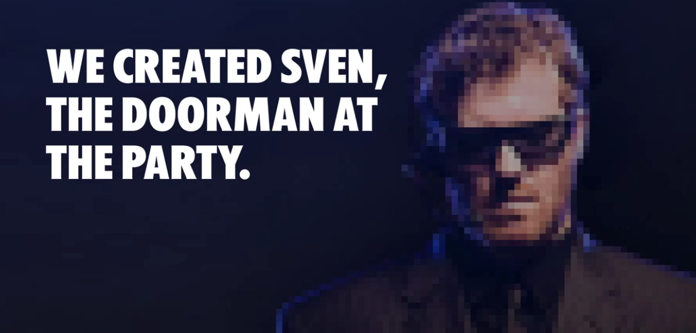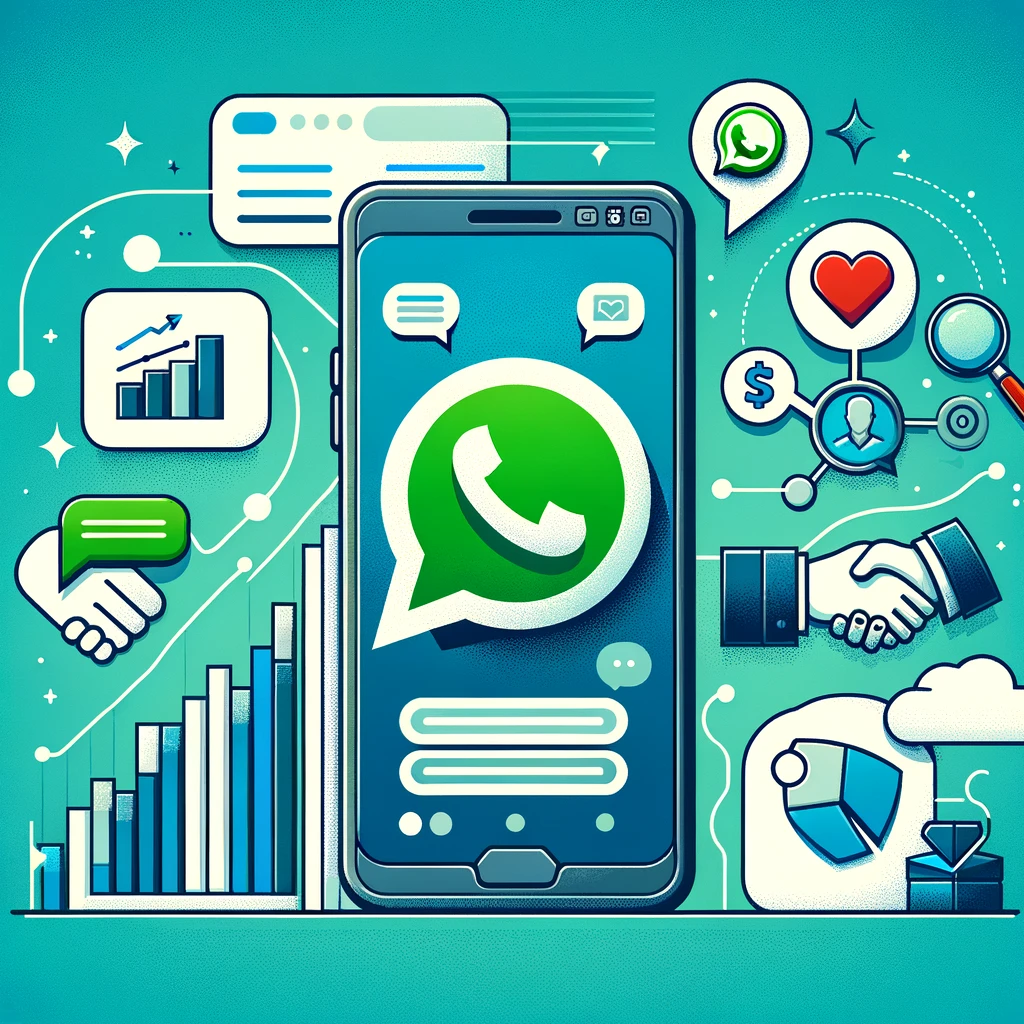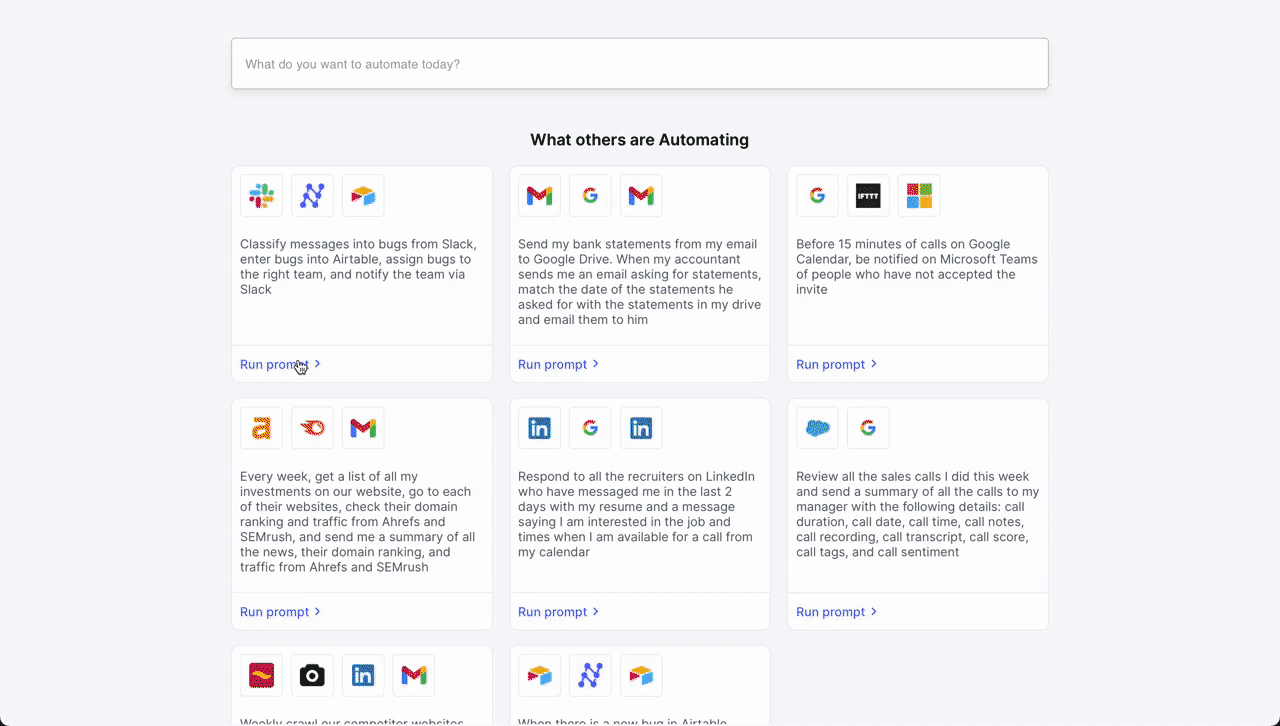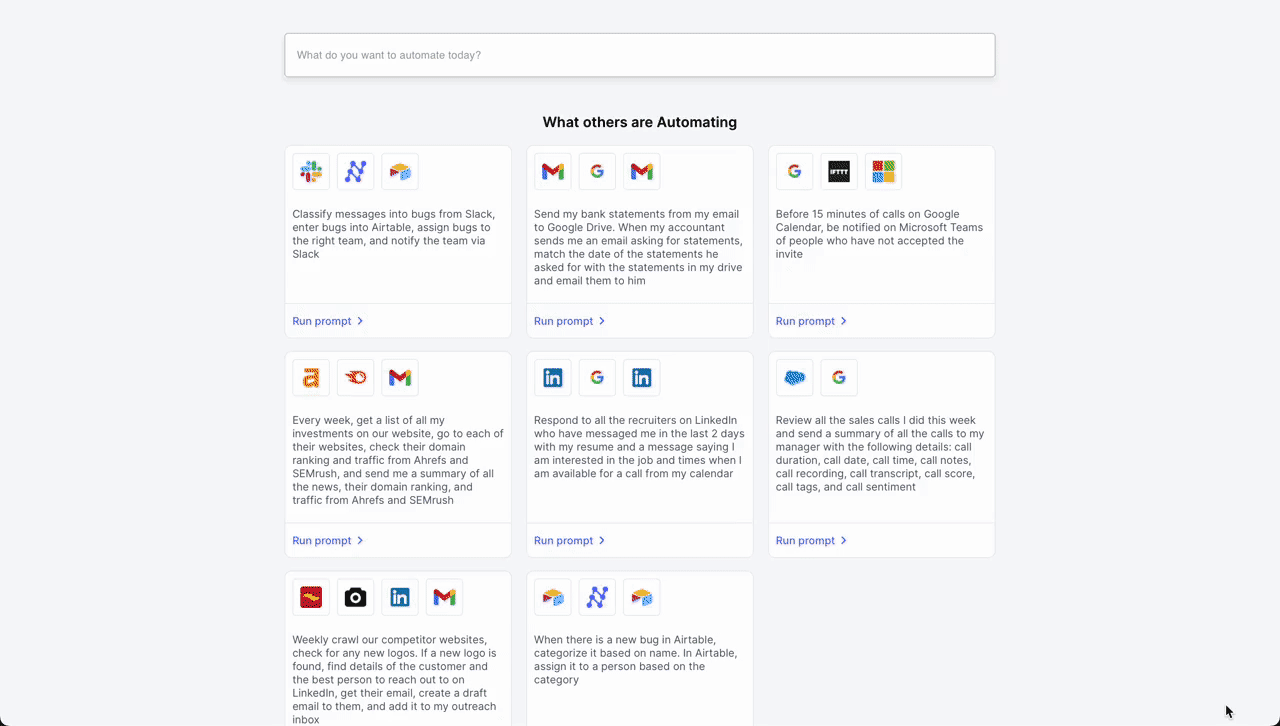Introduction
In this blog, we will dive right into something massive that’s reshaping the marketing world: WhatsApp. It’s not just for texting your friends anymore. In today’s high-speed digital era, WhatsApp has become a goldmine for savvy marketers. Why? Because it’s where the attention is!
We remember back in the day, it was all about email lists, then we shifted to social media platforms like Facebook and Instagram. But guess what? The game’s changing again. Now, it’s all about direct, personal engagement, and that’s where WhatsApp shines. This app has transformed from a simple messaging service to a powerful marketing tool.
In this guide, we will break down everything you need to get started with WhatsApp Marketing. Whether you’re a small business owner, a big brand, or just curious about the future of digital marketing, you’re in the right place. We’ll go through how to harness the power of WhatsApp, craft messages that resonate, and ultimately, drive your business through the roof. Let’s get started!
Understanding WhatsApp’s Potential
First things first, let’s talk numbers. WhatsApp isn’t just big; it’s colossal. With over 2 billion users worldwide, and a growing user base in over 180 countries, it’s one of the most globally accessible platforms out there. But here’s the kicker – while everyone’s busy focusing on traditional social media, WhatsApp’s engagement rates are through the roof. The average user checks WhatsApp more than 23 times per day. That’s 23 opportunities to get your message seen!
Now, let’s put this into perspective. Compared to Facebook and Instagram, WhatsApp offers a more intimate, distraction-free environment. You’re not just another ad lost in a sea of content. You’re right there, in your customer’s pocket, potentially having one-on-one conversations.
And it’s not just theory. Big brands have started catching on. Take Hellmann’s, for example. They used WhatsApp to engage customers in a unique way, offering real-time cooking advice. The result? An engagement rate that most marketers only dream of.
Hellmann’s successfully taps WhatsApp | WARC
NEW YORK: Hellmann’s, the mayonnaise brand owned by Unilever, has provided a demonstration of how marketers can effectively leverage mobile-messaging tools such as WhatsApp to engage consumers.Thana Uchino, Unilever’s digital marketing manager in Brazil, discussed this topic while speaking at the SM2 Innovation Summit, an event organised by the Mobile Marketing Association.

Or consider Absolut Vodka’s campaign, which used WhatsApp to invite users to a virtual party – a brilliant move that combined exclusivity with direct engagement.
First Never Follows. A Svensational WhatsApp Case Study from Absolut
Introducing: Absolut Unique Access

These cases aren’t anomalies; they’re clear indicators of WhatsApp’s untapped potential.
So, what’s the bottom line? WhatsApp is more than just a messaging app; it’s a powerful marketing tool that offers unparalleled reach and engagement. And in this guide, we’re going deep into how you can tap into this goldmine. Stay tuned, because this is just the beginning.
Get Started
Alright, let’s get your hands dirty! The first step to killing it on WhatsApp? Set up your WhatsApp Business account. It’s like your regular WhatsApp, but with superpowers for your business. This is your foundation, your launchpad for everything that comes next.
Creating your account is just step one. Once you’re in, it’s time to optimize your business profile. This is crucial. Your profile is your business’s digital handshake. It needs to be clear, compelling, and, most importantly, human. Upload a profile photo that represents your brand – could be your logo, a product shot, whatever screams ‘This is us!’. Then, nail your description. This isn’t just info; it’s your first pitch to potential customers.
But wait, there’s more! You can’t just set it and forget it. Integrating WhatsApp with your existing marketing tools is where the magic happens. Link it up with your CRM to keep track of customer interactions. Sync it with your e-commerce platform for seamless customer service. The goal? Create a cohesive ecosystem where WhatsApp acts as a powerful cog in your marketing machine. We will learn how to do this in later sections using workflow automation.
Building Your Audience
Now, onto the real game – building your audience. Growing your WhatsApp contact list is about adding value and being where your customers are.
Let’s get started.
- Start by leveraging your existing touchpoints. Got an email list? Send out a blast inviting them to connect on WhatsApp. Social media followers? Drop your WhatsApp link with a killer call-to-action. It’s all about cross-promotion. Use every channel you have to funnel people to your WhatsApp.
- But here’s where many get it wrong – you can’t just broadcast messages. This isn’t a megaphone; it’s a two-way street. Engagement is king here. Start real conversations. Ask questions. Get feedback. Run exclusive WhatsApp promos or flash sales. Make your audience feel special, like they’re in an exclusive club.
- Remember, WhatsApp is a personal platform. So, personalize your interactions. Use your customers’ names, reference past purchases, make them feel seen. This isn’t just about growing a list; it’s about building a community. A community that trusts you, engages with you, and ultimately, buys from you.
Content is King
Content on WhatsApp isn’t just king; it’s the emperor, the supreme overlord of your marketing empire. But here’s the deal: not all content is created equal, especially on WhatsApp.
First up, the types of content that crush it on WhatsApp.
- You want content that’s personal, direct, and adds value. Think flash sales, exclusive offers, behind-the-scenes peeks – stuff that makes your audience feel like insiders.
- Real-world example? How about a local bakery sending out daily menus or special deals? It’s direct, it’s personal, and who doesn’t love fresh pastries? Or a clothing brand dropping exclusive first looks at new collections to their WhatsApp list. That’s how you create buzz and drive sales.
- But wait, there’s more. Engaging and interactive messages. It’s not just about what you say; it’s how you say it. You’ve got to be conversational, be real. Ask questions, get feedback, run polls. Make your audience part of the conversation. Remember, WhatsApp is a chat app. So, chat!
- Now, let’s talk multimedia. Images, videos, GIFs – these are your weapons. A picture is worth a thousand words, and a video? That’s your novel. Show your product in action, share video testimonials, send GIFs that make them laugh. It’s about creating an experience, not just sending a message.
- Effective multimedia usage isn’t just about blasting content; it’s about crafting stories, building a narrative that your audience can connect with. And always, always keep it high-quality and on-brand.
Automate Whatsapp marketing with our AI-driven workflows, designed by Nanonets for you and your teams.
Leveraging WhatsApp Features
Moving on to the next level – leveraging WhatsApp’s unique features. This is where the WhatsApp Business app really flexes its muscles.
- Catalogs. This feature is a game-changer. It lets you showcase your products right there in the chat. Imagine this – a customer asks about a product, and boom, you send them your catalog. It’s like having your store in your customer’s pocket. Keep it updated, keep it fresh, and use it to close sales right in the chat. Watch the quick tutorial below to get started.
- Quick Replies. This is about efficiency. You get a lot of similar queries, right? With Quick Replies, you’ve got pre-set responses at your fingertips. It saves time, ensures consistency, and keeps the conversation flowing. Watch the quick tutorial below to get started.
- Chatbots. Automating communication doesn’t mean losing the personal touch. It’s about being there, always, even when you’re not. Chatbots can handle FAQs, take orders, even provide basic support. You can use workflow automation to build Whatsapp chatbots, which we will explore later.
- WhatsApp Status. This is your billboard. Use it for daily updates, special announcements, or just to keep your brand top of mind. It’s ephemeral, sure, but that’s the beauty of it. It creates a sense of urgency.
- Whatsapp API. The Whatsapp API can be used to send messages and create automated messaging workflows that run whenever a user messages your business on Whatsapp. We wrote a comprehensive guide on the Whatsapp API. Check it out below.
How to use Whatsapp API to Send Messages
Learn how to use WhatsApp’s API to send messages. Understand the WhatsApp Business Platform and integrate with Nanonets for workflow automation.

Analytics and Optimization
If you’re not measuring your WhatsApp marketing efforts, you’re shooting in the dark. Let’s turn on the lights.
First, measuring success. You’ve got to know what works and what doesn’t. It’s not just about sending messages; it’s about understanding the impact. How many people are reading your messages? How many are engaging? Are they clicking your links, are they buying your products? These are the questions that matter.
But wait, how do you track all this? Take a look at this guide.
How to measure success of WhatsApp campaigns with WhatsApp Business Analytics | LimeChat
Learn how to measure the performance of your WhatsApp automations and promotional campaigns with WhatsApp Business analytics.

Now, the real magic – iterating and optimizing based on data. This is where you take your game to the next level. Got a message that’s getting a lot of opens but no clicks? Change up your call-to-action. See a pattern in the times your audience is most active? Adjust your sending schedule. It’s all about being agile, being willing to pivot.
And remember, it’s not just about the numbers. Read the responses, understand the sentiment, get a feel for the conversation. Are people excited, are they indifferent, are they annoyed? This qualitative data is gold.
Examples of Effective WhatsApp Marketing
Let’s dive into real-world and effective WhatsApp marketing examples.
- Flash Sales and Exclusive Deals: Picture this – you drop a message to your WhatsApp list saying, “Flash Sale: 30% off for the next 3 hours!” Boom! You create urgency, exclusivity, and a reason for people to act now. It’s about making your audience feel special, like they’re part of a VIP club.
- Personalized Product Recommendations: Imagine a customer who bought a pair of running shoes from you last month. You hit them up with, “Hey [Name], hope you’re loving those shoes! We just got these new sweat-resistant running tees that would go great with them.” It’s personal, it’s relevant, and it shows you care.
- Automated Booking and Appointments: You run a salon? A dental clinic? Use WhatsApp to let customers book appointments. “Click here to pick your date and time.” It’s convenient for them, efficient for you, and it’s all happening right in their favorite messaging app.
- Customer Support and Feedback: Someone’s got an issue with their order? They hit you up on WhatsApp, you sort it out in real-time. Then you ask for feedback. “Was our service up to the mark?”
- Event Invites and Updates: Hosting a webinar? Launching a new store? Send an invite over WhatsApp. “Hey, we thought you might enjoy this.” Then keep them updated. This is a direct line to your audience’s attention.
- Behind-the-Scenes Content: Give them a peek behind the curtain. “Here’s how we make our handmade chocolates.” It’s engaging, it humanizes your brand, and it builds a deeper connection with your audience.
- User-Generated Content and Contests: Run a contest. “Send us your best summer look with our product and win.” Share the entries, create a buzz. It’s interactive, it’s fun, and it gets people talking about your brand.
- Educational Content and Tips: You’re a fitness brand? Send out quick workout tips or healthy recipes. Add value, establish authority, and keep your brand top of mind.
- Status Updates for Limited-Time Offers: Use your WhatsApp Status to drop limited-time offers. “24-hour sale starts now!” It’s ephemeral, creating a sense of urgency and exclusivity.
- Re-engagement Messages: Someone hasn’t shopped in a while? Hit them up. “We miss you! Here’s 10% off on your next purchase.” Remind them you’re still there, ready to serve.
Each of these strategies is about creating a unique, engaging, and value-driven experience for your audience. It’s not just about selling; it’s about building relationships, adding value, and creating a community around your brand.
Automate Whatsapp Marketing
Alright, let’s shift gears and talk about supercharging your WhatsApp marketing game. We’re diving into the world of automation, and not just any automation, but the kind that turns your marketing into a well-oiled, self-driving machine. We’re be talking about using workflow automation with Nanonets, the secret sauce to make your WhatsApp marketing not just easier, but smarter.
Introduction to Automation
Let’s talk automation. In the digital world, it’s all about doing more with less – less time, less effort, more impact. This is where automation comes in. It’s like having a super-efficient robot sidekick handling your routine tasks in various apps seamlessly, so you can focus on the big picture.
And when it comes to automating your WhatsApp marketing? Enter Nanonets Workflows. Think of it as your digital marketing Swiss Army knife, specifically tailored for WhatsApp.
Understanding Nanonets Workflows
Welcome to Nanonets Workflow Automation, where AI-driven technology empowers you and your team to automate manual tasks and construct efficient workflows in minutes. Utilize natural language to effortlessly create and manage workflows that seamlessly integrate with all your documents, apps, and databases.
Our platform offers not only seamless app integrations for unified workflows but also the ability to build and utilize custom Large Language Models Apps for sophisticated text writing and response posting within your apps. All the while ensuring data security remains our top priority, with strict adherence to GDPR, SOC 2, and HIPAA compliance standards.
To better understand the practical applications of Nanonets workflow automation, let’s delve into some real-world examples.
Automate Whatsapp marketing with our AI-driven workflows, designed by Nanonets for you and your teams.
Creating Your First Nanonets Workflow
Let’s say we want to send bulk messages to yesterday’s Hubspot CRM leads everyday. We can create a workflow for this within seconds using workflow automation powered by Nanonets.
We provide the requirements of our workflow as a natural language prompt, and the workflow builder spins up the workflow within seconds.
We authenticate our Hubspot and Whatsapp accounts, and then we are ready to deploy the workflow and make it live.
There are numerous useful workflows that both individuals and organizations could create to streamline communication, automate tasks, and enhance productivity. Here are three practical examples of such workflows:
Sales Lead Notification Workflow
- Apps Involved: WhatsApp, Salesforce, Google Sheets
- Workflow:
- Trigger: A potential customer sends a message to a company’s WhatsApp number expressing interest in a product or service.
- Action 1: The lead’s details (name, contact information, interest) are automatically logged into Salesforce under a new lead entry.
- Action 2: The same information is also added to a Google Sheet that tracks all incoming leads for further analysis and follow-up.
- Action 3: An automated introductory message created using a Whatsapp Catalog Template is sent as Whatsapp reply.

Appointment Reminder and Confirmation Workflow
- Apps Involved: WhatsApp, Google Calendar, Trello
- Workflow:
- Trigger: A calendar event (appointment) is approaching in Google Calendar (e.g., 24 hours before the scheduled time).
- Action 1: An automated reminder message is sent to the client’s WhatsApp number, asking for confirmation or rescheduling.
- Action 2: Upon receiving a confirmation reply from the client on WhatsApp, a Trello card is automatically created or updated in the business’s project management board to signify the confirmed appointment.

Customer Support Ticket and Follow-Up Workflow
- Apps Involved: WhatsApp, Zendesk, Slack, Gmail, Trello
- Workflow:
- Trigger: A customer sends a message to a business’s WhatsApp number with a specific keyword present in the message body (e.g., “help” or “support”).
- Action 1: The message triggers the creation of a new support ticket in Zendesk.
- Action 2: The ticket information, along with the customer’s original message, is automatically forwarded to a dedicated Slack channel (e.g., #customer_support) for the support team to view and discuss.
- Action 3: An automated email is generated and sent to the support team’s Gmail account, including the customer’s message and contact details for follow-up. This email also contains a link to the newly created Zendesk ticket.
- Action 4: A Trello card is created in a designated board and list (e.g., ‘New Tickets’ list on a ‘Support’ board), capturing the customer’s issue details. This card is used for tracking the progress of the ticket through various stages of resolution.
- Action 5: Once the support ticket is marked as resolved in Zendesk, an automated message is sent back to the customer through WhatsApp, confirming the resolution of their issue and asking for any further assistance.

These workflows are designed to enhance communication efficiency, ensure prompt responses, and keep track of important interactions and tasks across different platforms. They can be tailored to specific organizational needs and can significantly streamline various business processes.
Summary
We’ve covered a ton of ground in this guide, and we hope your mind’s buzzing with ideas. Let’s hit the highlights, the key takeaways from our deep dive:
- WhatsApp’s Massive Reach: Remember, with over 2 billion users worldwide, WhatsApp isn’t just a messaging app; it’s a marketing powerhouse.
- Personalization is Key: Whether it’s through personalized product recommendations or engaging directly with customer feedback, WhatsApp lets you make each customer feel like they’re your only customer.
- Leveraging WhatsApp Features: From Business Catalogs to Quick Replies and automated Chatbots, these tools are designed to streamline your marketing and customer service efforts. Use them to your advantage.
- Content Matters: Flash sales, exclusive deals, behind-the-scenes peeks, or educational content – whatever you do, make it engaging, make it valuable, and make it memorable.
- Analytics Drive Success: You can’t manage what you don’t measure. Use analytics to understand what works, what doesn’t, and pivot accordingly.
- Workflow Automation to power up: Use workflow automation tools like Nanonets to automate your Whatsapp marketing workflows – improving reply times and eliminating manual work.
Now, let’s talk about experimentation and persistence. The digital world is constantly evolving, and WhatsApp marketing is no exception. What works today might not work tomorrow, so be ready to adapt, to test new waters. Don’t be afraid to try new things, to take risks. Some of your strategies might flop, but some could skyrocket your business to new heights. Remember, every failure is a lesson learned, and every success is a step closer to your goal.
As for the future of WhatsApp marketing, it’s bright. With new features rolling out and more businesses catching on to its potential, the landscape is evolving. We’re moving towards a more connected, more personal era of marketing, and WhatsApp is leading the charge.
So, whether you’re a small business owner, a marketer at a large corporation, or just someone building your own brand, WhatsApp serves as an excellent marketing tool.
Automate Whatsapp marketing with our AI-driven workflows, designed by Nanonets for you and your teams.
Workflow Automation with Nanonets
In today’s fast-paced business environment, workflow automation stands out as a crucial innovation, offering a competitive edge to companies of all sizes. The integration of automated workflows into daily business operations is not just a trend; it’s a strategic necessity. In addition to this, the advent of LLMs has opened even more opportunities for automation of manual tasks and processes.
To better understand the practical applications of Nanonets workflow automation, let’s delve into some real-world examples.
- Automated Customer Support and Engagement Process
- Ticket Creation – Zendesk: The workflow is triggered when a customer submits a new support ticket in Zendesk, indicating they need assistance with a product or service.
- Ticket Update – Zendesk: After the ticket is created, an automated update is immediately logged in Zendesk to indicate that the ticket has been received and is being processed, providing the customer with a ticket number for reference.
- Information Retrieval – Nanonets Browsing: Concurrently, the Nanonets Browsing feature searches through all the knowledge base pages to find relevant information and possible solutions related to the customer’s issue.
- Customer History Access – HubSpot: Simultaneously, HubSpot is queried to retrieve the customer’s previous interaction records, purchase history, and any past tickets to provide context to the support team.
- Ticket Processing – Nanonets AI: With the relevant information and customer history at hand, Nanonets AI processes the ticket, categorizing the issue and suggesting potential solutions based on similar past cases.
- Notification – Slack: Finally, the responsible support team or individual is notified through Slack with a message containing the ticket details, customer history, and suggested solutions, prompting a swift and informed response.
- Automated Issue Resolution Process

- Initial Trigger – Slack Message: The workflow begins when a customer service representative receives a new message in a dedicated channel on Slack, signaling a customer issue that needs to be addressed.
- Classification – Nanonets AI: Once the message is detected, Nanonets AI steps in to classify the message based on its content and past classification data (from Airtable records). Using LLMs, it classifies it as a bug along with determining urgency.
- Record Creation – Airtable: After classification, the workflow automatically creates a new record in Airtable, a cloud collaboration service. This record includes all relevant details from the customer’s message, such as customer ID, issue category, and urgency level.
- Team Assignment – Airtable: With the record created, the Airtable system then assigns a team to handle the issue. Based on the classification done by Nanonets AI, the system selects the most appropriate team – tech support, billing, customer success, etc. – to take over the issue.
- Notification – Slack: Finally, the assigned team is notified through Slack. An automated message is sent to the team’s channel, alerting them of the new issue, providing a direct link to the Airtable record, and prompting a timely response.
- Automated Meeting Scheduling Process

- Initial Contact – LinkedIn: The workflow is initiated when a professional connection sends a new message on LinkedIn expressing interest in scheduling a meeting. An LLM parses incoming messages and triggers the workflow if it deems the message as a request for a meeting from a potential job candidate.
- Document Retrieval – Google Drive: Following the initial contact, the workflow automation system retrieves a pre-prepared document from Google Drive that contains information about the meeting agenda, company overview, or any relevant briefing materials.
- Scheduling – Google Calendar: Next, the system interacts with Google Calendar to get available times for the meeting. It checks the calendar for open slots that align with business hours (based on the location parsed from LinkedIn profile) and previously set preferences for meetings.
- Confirmation Message as Reply – LinkedIn: Once a suitable time slot is found, the workflow automation system sends a message back through LinkedIn. This message includes the proposed time for the meeting, access to the document retrieved from Google Drive, and a request for confirmation or alternative suggestions.
- Invoice Processing in Accounts Payable
- Receipt of Invoice – Gmail: An invoice is received via email or uploaded to the system.
- Data Extraction – Nanonets OCR: The system automatically extracts relevant data (like vendor details, amounts, due dates).
- Data Verification – Quickbooks: The Nanonets workflow verifies the extracted data against purchase orders and receipts.
- Approval Routing – Slack: The invoice is routed to the appropriate manager for approval based on predefined thresholds and rules.
- Payment Processing – Brex: Once approved, the system schedules the payment according to the vendor’s terms and updates the finance records.
- Archiving – Quickbooks: The completed transaction is archived for future reference and audit trails.
- Internal Knowledge Base Assistance

- Initial Inquiry – Slack: A team member, Smith, inquires in the #chat-with-data Slack channel about customers experiencing issues with QuickBooks integration.
- Automated Data Aggregation – Nanonets Knowledge Base:
- Ticket Lookup – Zendesk: The Zendesk app in Slack automatically provides a summary of today’s tickets, indicating that there are issues with exporting invoice data to QuickBooks for some customers.
- Slack Search – Slack: Simultaneously, the Slack app notifies the channel that team members Patrick and Rachel are actively discussing the resolution of the QuickBooks export bug in another channel, with a fix scheduled to go live at 4 PM.
- Ticket Tracking – JIRA: The JIRA app updates the channel about a ticket created by Emily titled “QuickBooks export failing for QB Desktop integrations,” which helps track the status and resolution progress of the issue.
- Reference Documentation – Google Drive: The Drive app mentions the existence of a runbook for fixing bugs related to QuickBooks integrations, which can be referenced to understand the steps for troubleshooting and resolution.
- Ongoing Communication and Resolution Confirmation – Slack: As the conversation progresses, the Slack channel serves as a real-time forum for discussing updates, sharing findings from the runbook, and confirming the deployment of the bug fix. Team members use the channel to collaborate, share insights, and ask follow-up questions to ensure a comprehensive understanding of the issue and its resolution.
- Resolution Documentation and Knowledge Sharing: After the fix is implemented, team members update the internal documentation in Google Drive with new findings and any additional steps taken to resolve the issue. A summary of the incident, resolution, and any lessons learned are already shared in the Slack channel. Thus, the team’s internal knowledge base is automatically enhanced for future use.
The Future of Business Efficiency
Nanonets Workflows is a secure, multi-purpose workflow automation platform that automates your manual tasks and workflows. It offers an easy-to-use user interface, making it accessible for both individuals and organizations.
To get started, you can schedule a call with one of our AI experts, who can provide a personalized demo and trial of Nanonets Workflows tailored to your specific use case.
Once set up, you can use natural language to design and execute complex applications and workflows powered by LLMs, integrating seamlessly with your apps and data.

Supercharge your teams with Nanonets Workflows allowing them to focus on what truly matters.
Automate Whatsapp marketing with our AI-driven workflows, designed by Nanonets for you and your teams.

